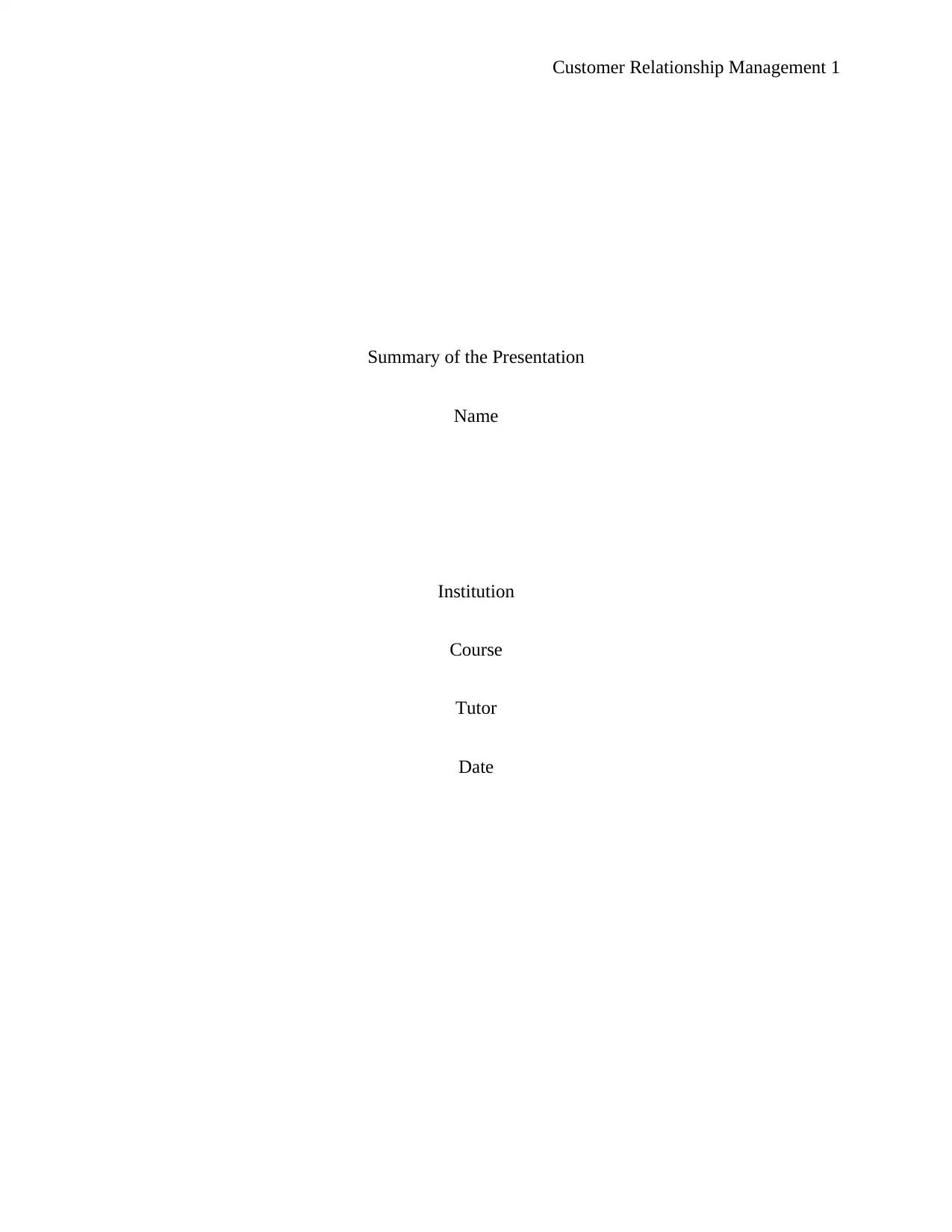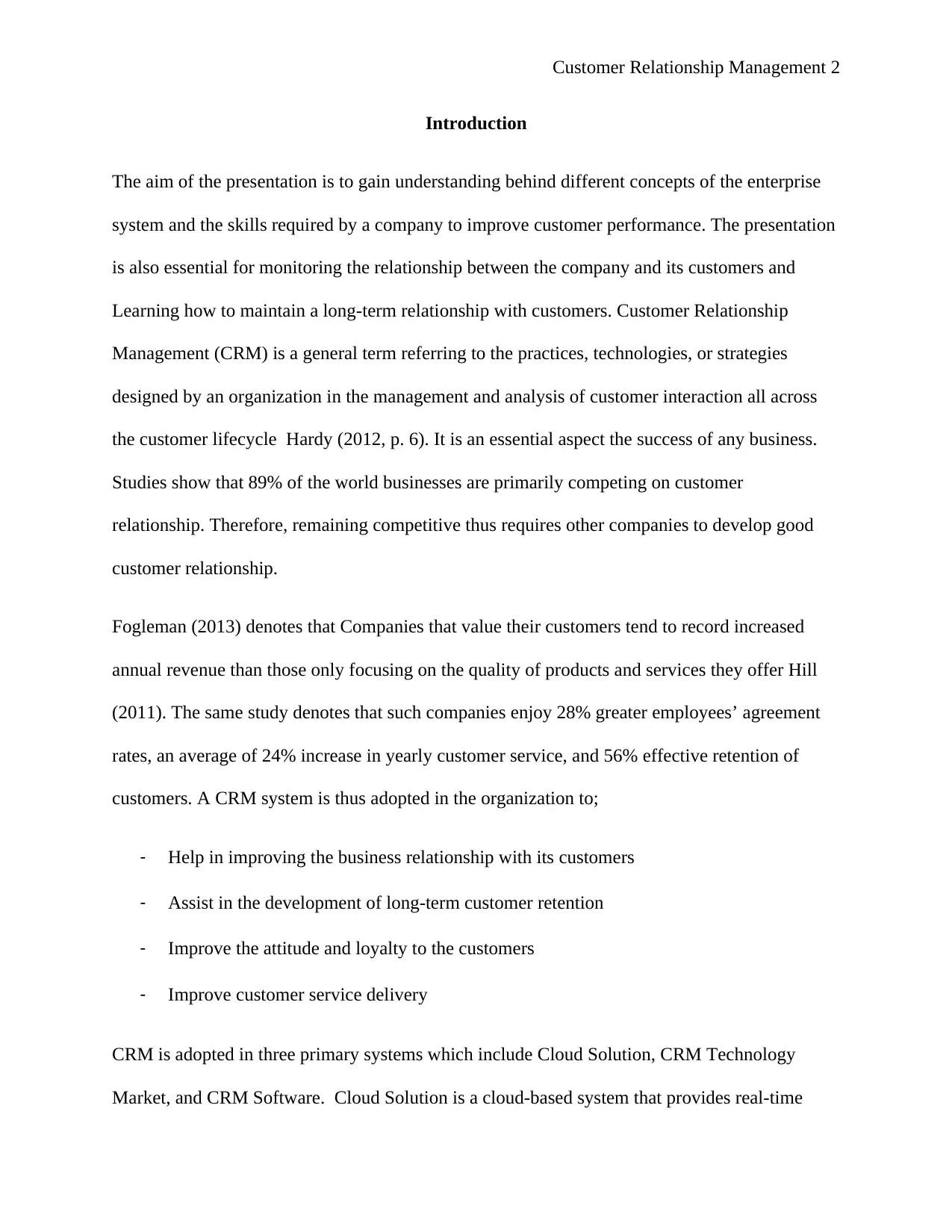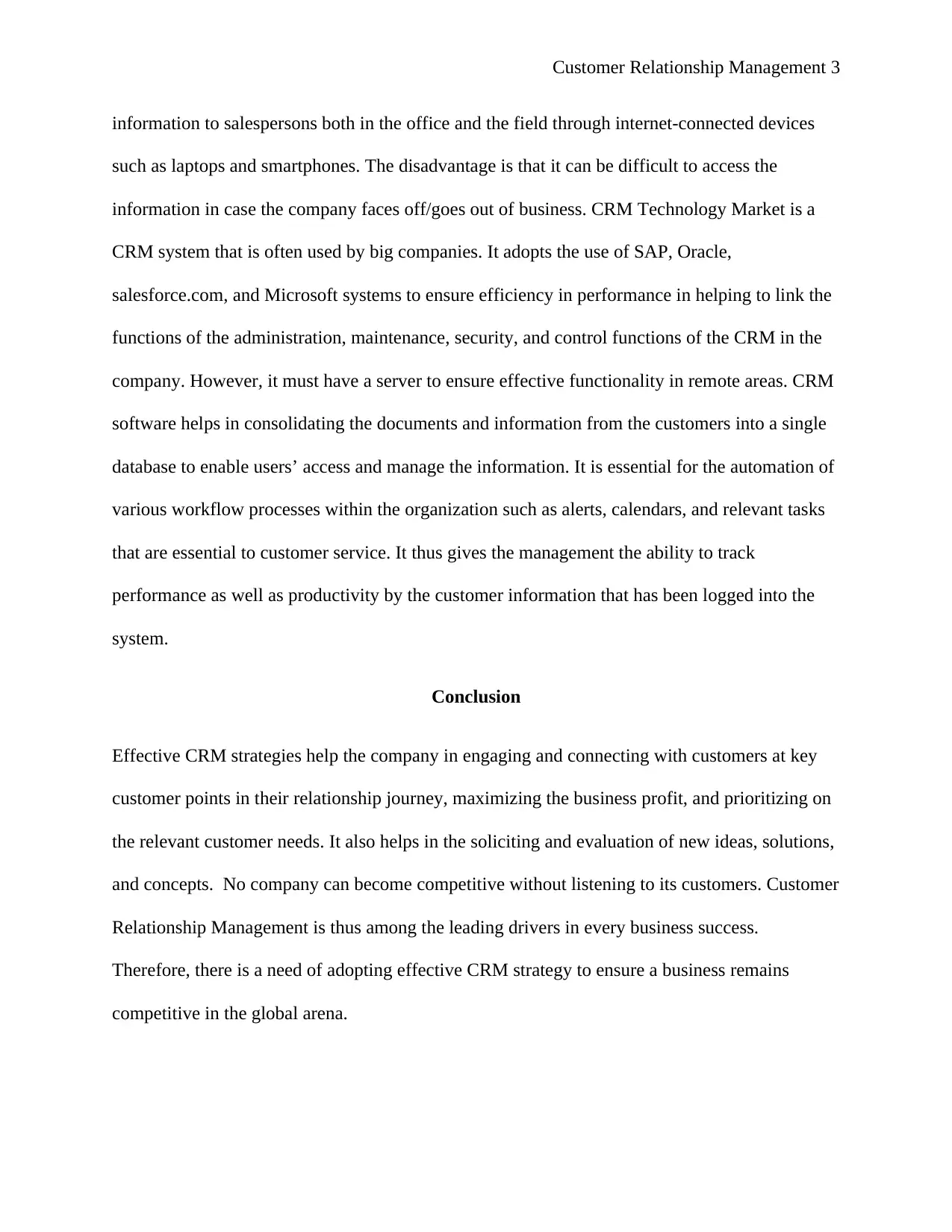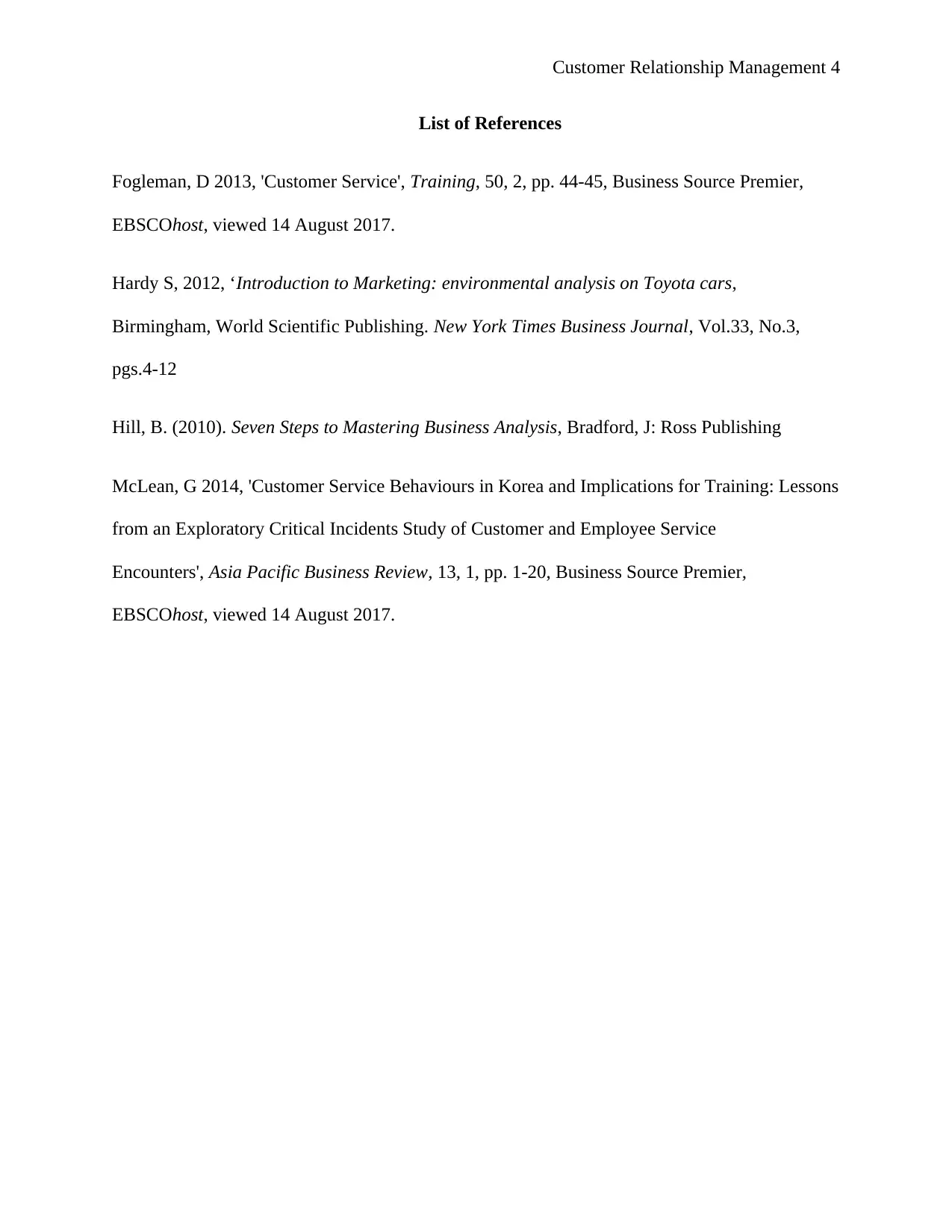Customer Relationship Management Presentation Summary Report
VerifiedAdded on 2020/03/04
|4
|727
|159
Report
AI Summary
This report summarizes a presentation on Customer Relationship Management (CRM). It explores the core concepts of CRM, emphasizing its importance for business success in today's competitive landscape. The report highlights how CRM practices, technologies, and strategies are designed to manage and analyze customer interactions throughout the customer lifecycle. It delves into the benefits of effective CRM, including increased revenue, improved employee agreement, enhanced customer service, and customer retention. The report discusses the three primary CRM systems: Cloud Solutions, CRM Technology Market, and CRM Software, outlining their functionalities, advantages, and disadvantages. It concludes by emphasizing the necessity of adopting effective CRM strategies for businesses to engage customers, maximize profits, and stay competitive. The report also references key studies and sources to support its findings, and stresses the importance of listening to customers to foster a successful business environment.
1 out of 4











![[object Object]](/_next/static/media/star-bottom.7253800d.svg)